So your dog’s favorite meal is no longer agreeing with him. Instead of leaving him with a full tummy and a wagging tail, he’s showing signs of a sensitive stomach by vomiting, having diarrhea or passing gas shortly after the meal.
Many pet parents might assume the dog has developed an allergy to the main ingredient in the entrée, let’s say chicken, and a switch to beef cleared things right up. While that will certainly make the dog feel better, it won’t do the pet any favors by simply exchanging entrees and calling it a day. It’s a missed opportunity to improve their health.
The truth is, food allergies are very rare in canines. To clear up the issue, it’s worth exploring the possibility that your dog’s after-dinner ailment comes from a food intolerance.
In the following, we’ll show how dog food allergies are different from dog food intolerances, and how to restore your pet’s system by improving their diet.
Dog food allergies vs. intolerance
The symptoms of food allergies in dogs can be almost indistinguishable from ingredient intolerances. In either case, the body is having a negative reaction to food, leaving your dog feeling unwell. Understandably, the two conditions get confused with each other because both provoke an unwanted reaction in your pet’s body. However, the difference is a food allergy sets off an immune system response, whereas a food intolerance does not activate the immune system, though it does cause irritation.
We’ll unpack the causes and symptoms of a dog’s allergic reaction to an ingredient versus a sensitivity to an ingredient, why they’re different and what to watch for.
Dog Food Allergies
What does it mean when your dog has a food allergy? It means their immune system has (mistakenly) identified an ingredient as a threat, launching a protective response whenever an allergen enters the body.
To get into the cellular level, a dog with a food allergy has developed a set of antibodies to detect the presence of that allergen, known as antigens. When the antibodies pick up on the antigen, the immune defense kicks in, activating the white blood cells (mast cells) to release a chemical called histamine to ward off the invader.
Signs of food allergies in dogs
These are common signs of food allergies in dogs:
- Gastrointestinal disturbance, including nausea and vomiting
- A sudden onset of hives and itchy skin, ears and paws, causing the dog to bite and scratch at themselves
- Difficulty breathing
- Swelling of the face, lips, eyes and/or ears
What are the most common food allergens in dogs?
The common food allergens in dogs are beef, chicken, dairy, wheat and lamb, according to a scientific review of published data. Less common are soy, corn, egg, pork, fish and rice.
Dog Food Intolerance
Dog food intolerance symptoms can appear deceptively similar to an allergy outbreak. But it’s important to understand that food intolerance in dogs does not trigger an immune system response. The upside is they’re not dangerous, as allergies can be. But they’re not fun for anyone, as they create discomfort in our pets and can result in messy outcomes and expensive vet visits.
The root cause of dog food intolerance is overexposure to a specific ingredient or protein. Even though your dog happily chowed down on his chicken and rice recipe without a hitch, his system can develop an adverse reaction to the chicken over the months and years of overexposure — and limited nutrition.
Signs of food intolerances in dogs
Dog food intolerance symptoms show up shortly after the meal, and are usually confined to gastrointestinal disturbances, particularly vomiting, diarrhea and flatulence.
Full Circle Feeding is the Solution
Improper gut nutrition and a repetitive loop of the same food, year after year, is the perfect recipe for developing food intolerances. When your pet is plagued with ongoing tummy discomfort, they won’t be at their best and happiest selves.
The remedy to your dog’s disrupted system is simple: Provide your dog the variety they instinctually crave by practicing Full Circle Feeding. By trading off between poultry, beef, pork, fish as well as novel proteins, Full Circle Feeding:
- introduces a deeper bench of proteins and nutrients that sets up your dog for a lifetime of all-around health.
- contributes to a more diverse microbiome in the dog’s gut, enabling a healthier immune response and improved digestion and absorption of nutrients.
Not only that, but alternating whole-grain and grain-free diets provides various micronutrients, while helping to prevent gluten intolerances.
Identifying your dog’s food allergy
Food allergies in dogs are considered rare, amounting to less than 10% of all canine allergy sufferers, and less than a quarter of 1% of all dogs.
If you suspect your dog is allergic to an ingredient, you could try an at-home dog food allergy test, but experts say the results from these tests are dubious at best. The best method to identify a food allergy in canines is through a process of elimination.
To rule out the cause of your dog’s food allergy, a limited-ingredient diet can confirm the culprit. Limited-ingredient diets include just one protein source in each entrée, so as you introduce each protein in the lineup you can monitor their reaction, identifying which meats get the green light and which are causing problems in your pet. Once you’ve found the allergen, you can build your Full Circle Feeding practice around it.
Identifying and treating your dog’s food intolerance
If you’re not certain which ingredient is causing sensitivities in your dog’s system, you can adopt the very same approach as above and try a limited-ingredient diet until you find the cause.
The good news is, unlike food allergies, food intolerance is more easily treated than you would think, as long as you take the right approach. To illustrate how this works with Full Circle Feeding, we’ll use the example of a dog that develops an intolerance to his trusty, longtime chicken entree.
- Start practicing Full Circle feeding. Look for a brand that uses high-quality ingredients and nutritional concepts, such as probiotics for optimal gut health.
- After several months of practicing Full Circle Feeding, your dog should show improvements in their health — a stop to the tummy issues, along with a healthier coat and no more itchy skin. That’s a good time to reintroduce a chicken entree, only you’ll choose one from the higher-quality line. Feed and monitor your dog’s reaction.
- The combination of the gut health–boosting nutrients and the variety of nutrients will restore your pet’s system. Over time, you can start including chicken in the rotation again without any of the old issues.
Shop local and buy all the NutriSource dog food products you need to practice Full Circle Feeding from one of the independently owned and operated pet suppliers in your community.


